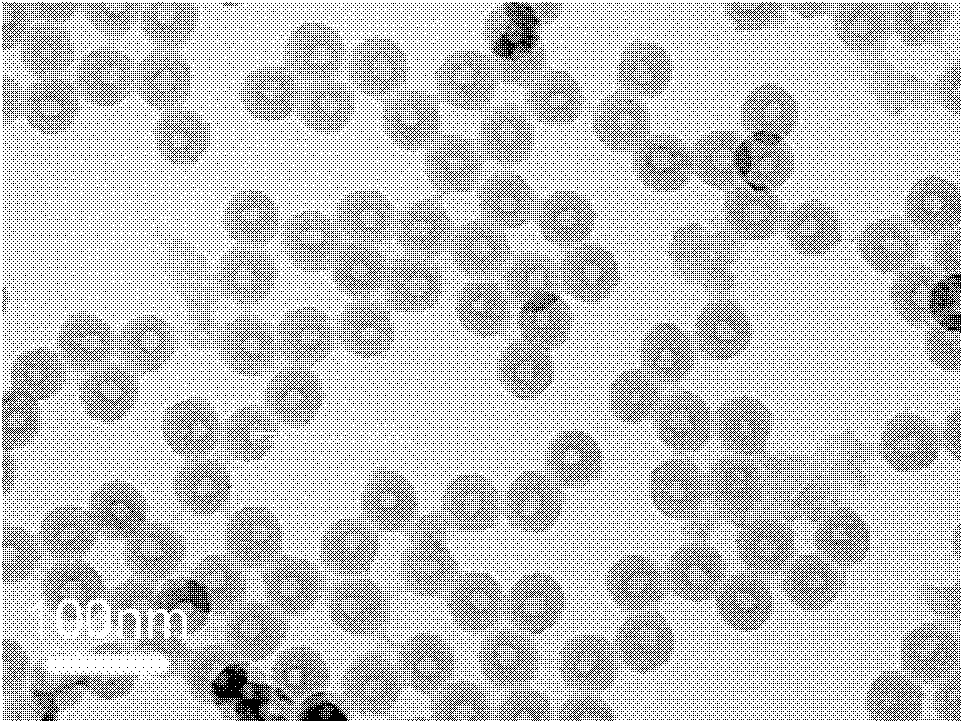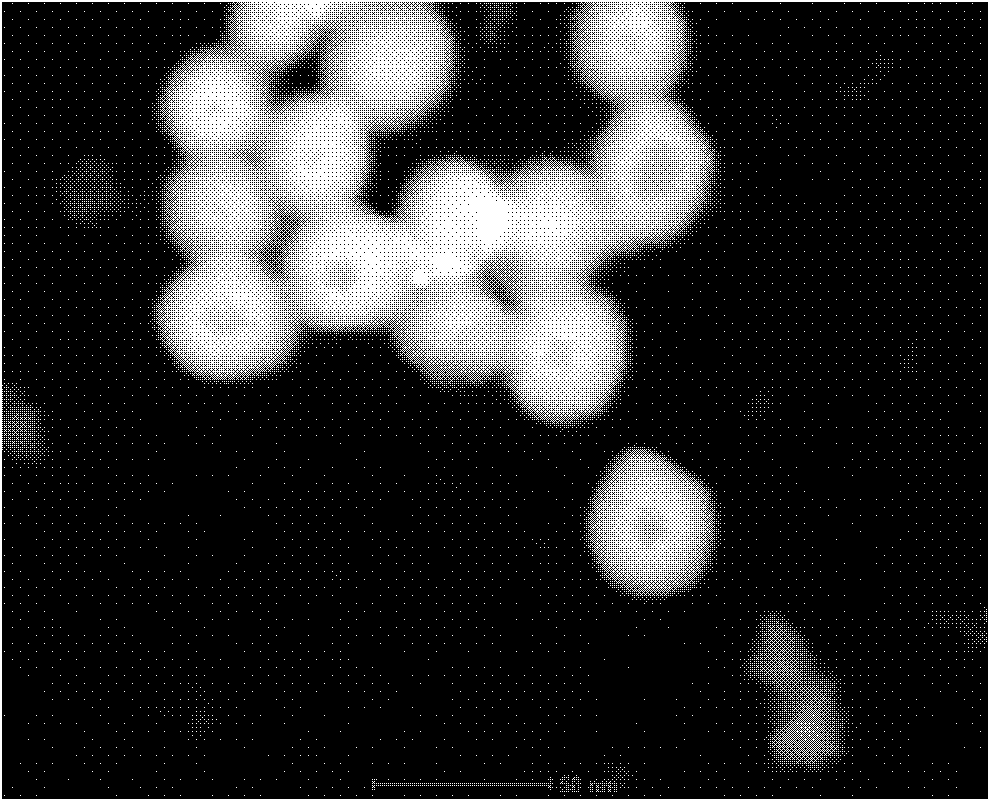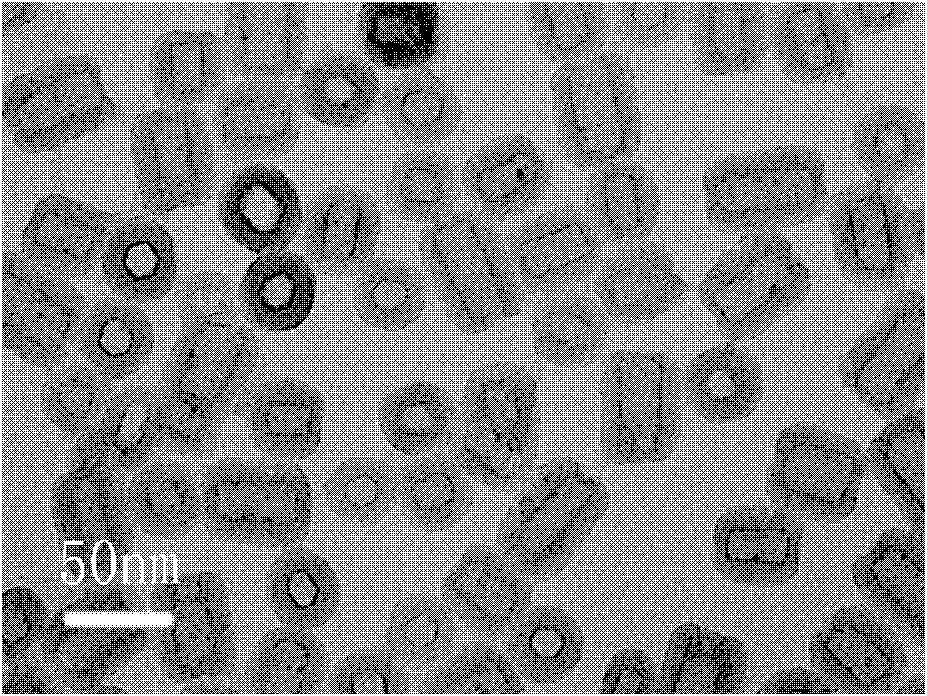A kind of high-efficiency nano-gold-based catalytic hydrogenation catalyst and preparation method thereof
A hydrogenation catalyst and catalytic hydrogenation technology, applied in the preparation of amino compounds, amino hydroxyl compounds, physical/chemical process catalysts, etc., can solve the problems of nano-gold loss, unfavorable catalyst recycling, etc.
- Summary
- Abstract
- Description
- Claims
- Application Information
AI Technical Summary
Problems solved by technology
Method used
Image
Examples
Embodiment 1
[0027] 10g 58 was dissolved in 50 mL of cyclohexane, stirred and heated to 50 °C and completely dissolved. Take 1.5mL of chloroauric acid with a concentration of 0.5mol / L, add hydroxyethylethylenediamine, until the chloroauric acid solution changes from cloudy to uniform and transparent again, then add it into the surfactant system, stir and disperse until the whole system is uniform transparent. Insulate and stir until the color of the system becomes lighter, add 0.1g of sodium borohydride, add 0.1mL of mercaptoethanol after the gold ions are completely reduced, stir until the system is uniform and transparent, adjust the pH of the reaction solution to 10.5-11 with ammonia water, drop into Tetraethyl orthosilicate 10g, stirred and reacted for 2h. After centrifugation, washing, drying, roasting, and reduction, electron microscope observation is carried out, such as figure 1 shown; characterized by high-angle annular dark field-scanning transmission electron microscopy ( ...
Embodiment 2
[0029] Dissolve 12g of Triton X-100 in 50mL of cyclohexane, stir and heat to 50°C and dissolve completely. Take 1.5mL of chloroauric acid with a concentration of 0.5mol / L, add hydroxyethylethylenediamine, until the chloroauric acid solution changes from cloudy to uniform and transparent again, then add it into the surfactant system, stir and disperse until the whole system is uniform transparent. Insulate and stir until the color of the system becomes lighter, add 0.1g of sodium borohydride, add 0.1mL of mercaptoethanol after the gold ions are completely reduced, stir until the system is uniform and transparent, adjust the pH of the reaction solution to 10.5-11 with ammonia water, drop into Tetraethyl orthosilicate 10g, stirred and reacted for 2h. After centrifugation, washing, drying, roasting, and reduction, electron microscope observation is carried out, such as image 3 As shown, the product is in the shape of a strip, the cavity diameter is 8-10nm, the aspect ratio is 2...
Embodiment 3
[0031] 10g 58 was dissolved in 50 mL of cyclohexane, stirred and heated to 50 °C and completely dissolved. Take 1.5mL of chloroauric acid with a concentration of 0.5mol / L, add hydroxyethylethylenediamine, until the chloroauric acid solution changes from cloudy to uniform and transparent again, then add it into the surfactant system, stir and disperse until the whole system is uniform transparent. Insulate and stir until the color of the system becomes lighter, add 0.1g of sodium borohydride, add 0.1mL of mercaptoethanol after the gold ions are completely reduced, stir until the system is uniform and transparent, adjust the pH of the reaction solution to 10.5-11 with ammonia water, drop into Tetraethyl orthosilicate 10g, stirred and reacted for 2h. After centrifugation, washing, drying, roasting, reduction, and electron microscope observation, the product particles are uniform, the particle diameter is 40-50nm, the nanometer metal particle diameter is less than 2nm, and the ...
PUM
| Property | Measurement | Unit |
|---|---|---|
| Particle size | aaaaa | aaaaa |
| Particle size | aaaaa | aaaaa |
| Diameter | aaaaa | aaaaa |
Abstract
Description
Claims
Application Information
 Login to View More
Login to View More - R&D
- Intellectual Property
- Life Sciences
- Materials
- Tech Scout
- Unparalleled Data Quality
- Higher Quality Content
- 60% Fewer Hallucinations
Browse by: Latest US Patents, China's latest patents, Technical Efficacy Thesaurus, Application Domain, Technology Topic, Popular Technical Reports.
© 2025 PatSnap. All rights reserved.Legal|Privacy policy|Modern Slavery Act Transparency Statement|Sitemap|About US| Contact US: help@patsnap.com



